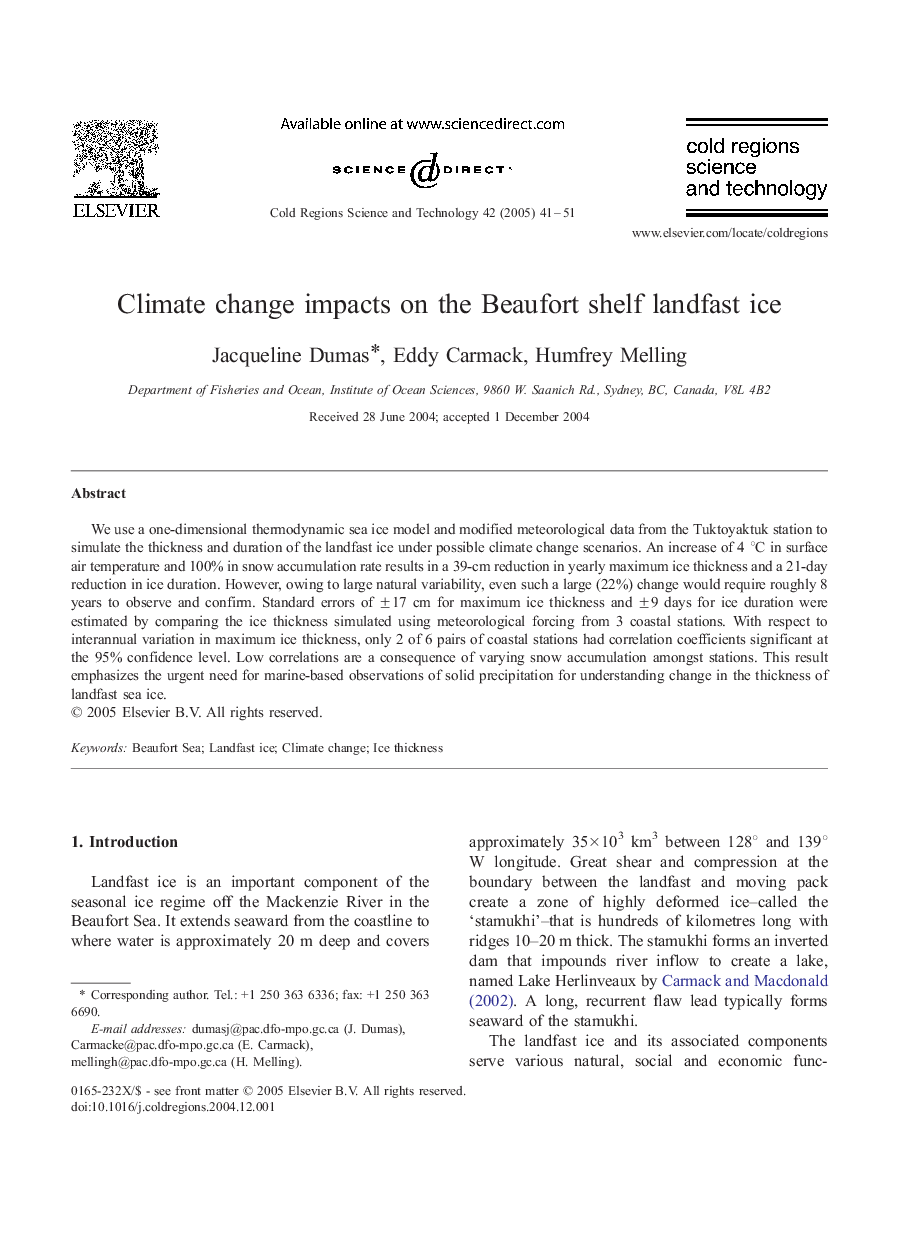| Article ID | Journal | Published Year | Pages | File Type |
|---|---|---|---|---|
| 9521580 | Cold Regions Science and Technology | 2005 | 11 Pages |
Abstract
We use a one-dimensional thermodynamic sea ice model and modified meteorological data from the Tuktoyaktuk station to simulate the thickness and duration of the landfast ice under possible climate change scenarios. An increase of 4 °C in surface air temperature and 100% in snow accumulation rate results in a 39-cm reduction in yearly maximum ice thickness and a 21-day reduction in ice duration. However, owing to large natural variability, even such a large (22%) change would require roughly 8 years to observe and confirm. Standard errors of ±17 cm for maximum ice thickness and ±9 days for ice duration were estimated by comparing the ice thickness simulated using meteorological forcing from 3 coastal stations. With respect to interannual variation in maximum ice thickness, only 2 of 6 pairs of coastal stations had correlation coefficients significant at the 95% confidence level. Low correlations are a consequence of varying snow accumulation amongst stations. This result emphasizes the urgent need for marine-based observations of solid precipitation for understanding change in the thickness of landfast sea ice.
Related Topics
Physical Sciences and Engineering
Earth and Planetary Sciences
Earth and Planetary Sciences (General)
Authors
Jacqueline Dumas, Eddy Carmack, Humfrey Melling,
